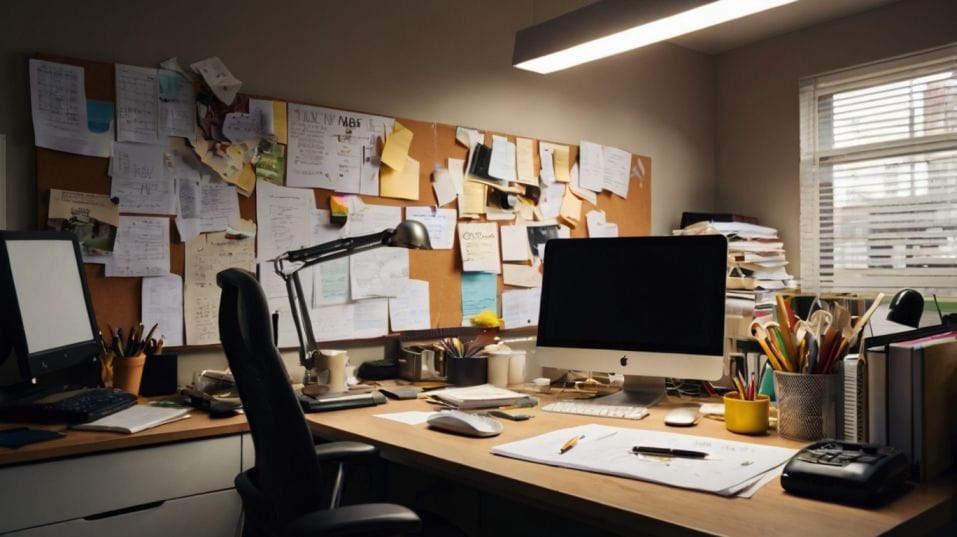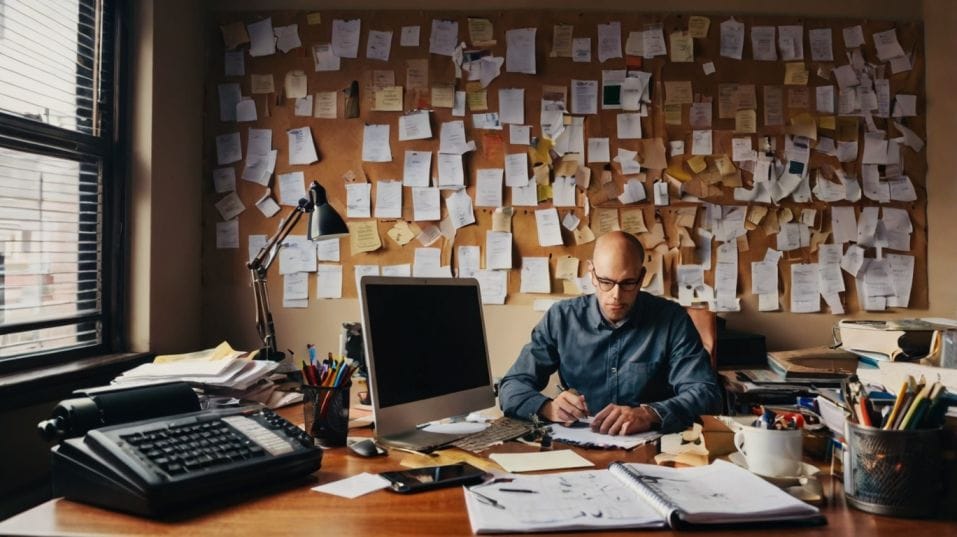The Most Common Work Distractions—and How to Mindfully Overcome Them
Struggling with workplace distractions? Learn how mindfulness can help you stay focused, reduce interruptions, and improve work efficiency.

Ever start a task only to get derailed before making real progress? Between emails, background noise, and constant interruptions, staying focused can feel impossible.
Studies show it takes over 20 minutes to regain deep concentration after a distraction. That lost time adds up, draining mental energy and productivity. Mindfulness offers a solution.
By training your brain to manage attention more effectively, you can resist distractions, sharpen focus, and get more done without feeling overwhelmed.
The Biggest Distractions Stealing Your Focus
Your ability to focus isn’t just about willpower—it’s constantly shaped by your environment. Workplace distractions come in many forms, but digital interruptions are among the most relentless.
Understanding how technology impacts your attention is the first step to regaining control.
The Digital Onslaught
Endless pings, alerts, and pop-ups hijack your attention, training your brain to crave constant stimulation. Multitasking feels efficient, but in reality, it slows you down, increases errors, and drains mental energy.
Every switch between tasks forces your brain to recalibrate, adding cognitive strain.
This constant partial attention creates a feedback loop. The more we respond immediately, the more our brains expect instant gratification.
Over time, this rewires the way we process information, making deep concentration harder to achieve.
Research suggests that heavy multitaskers have lower working memory capacity and struggle with sustained attention even when they’re not multitasking.

The Noise Problem
Open offices, ringing phones, casual conversations—background noise isn’t just annoying; it actively undermines concentration.
Studies link workplace noise pollution to higher stress levels and decreased cognitive performance. Your brain processes every sound, even when you’re trying to ignore it, leaving less bandwidth for deep work.
It’s not just external noise—internal noise can be just as disruptive. If your environment is chaotic, your mind mirrors that chaos.
That’s why some people find it easier to focus in a library or a quiet café. Creating an environment conducive to mindfulness and focus isn’t just a luxury; it’s a necessity for high performance.
The “Quick Question” Disruption
A colleague stops by: “Got a minute?” One minute turns into ten, and suddenly, your momentum is gone.
Unplanned interruptions break your workflow, forcing you to restart mentally. Without clear boundaries, your day can disappear into a series of fragmented conversations.
The Zeigarnik Effect explains why this happens. When a task is interrupted, your brain keeps it active in your working memory, creating a sense of unfinished business.
This lingering mental load can make it difficult to transition back into deep work, leaving you mentally fatigued by the end of the day.
Mental Overload
Not all distractions come from the outside. Overanalyzing a past meeting, stressing over deadlines, or mentally rehearsing future conversations can be just as disruptive.
This mental noise pulls focus away from meaningful work, making tasks feel harder than they actually are.
Stress amplifies this effect. When the brain perceives a threat—whether it’s an urgent deadline or a difficult conversation—it triggers the release of cortisol, making it harder to think clearly.
Over time, chronic stress impairs memory, decision-making, and attention span, reinforcing the cycle of distraction.
How Mindfulness Restores Focus
Mindfulness isn’t just about relaxation—it’s a powerful tool for improving attention.
By training your mind to stay present, you can break the habit of constant multitasking and develop deeper focus. One of the most effective ways to start is by embracing single-tasking.
Train Your Brain to Single-Task
Multitasking is a myth. The brain isn’t designed to juggle multiple cognitive tasks simultaneously. Instead, practice single-tasking:
- Set a clear intention before starting a task.
- Minimize digital clutter—close tabs, silence notifications, and create an interruption-free zone.
- Use a timer to structure deep work sessions, reinforcing focus with short breaks.
Single-tasking isn’t just about doing one thing at a time—it’s about doing it with full awareness. When you bring mindful attention to a task, you engage deeper cognitive resources, making work feel more immersive and less exhausting.
Take Control of Digital Distractions
Instead of reacting to every ping, reclaim your attention with mindful boundaries:
- Set fixed times for checking emails and messages.
- Turn off non-essential notifications.
- Use “Do Not Disturb” mode during high-focus periods.
A study from the University of California found that workers who batch their email-checking times feel less stressed and more in control of their work. By limiting unnecessary digital input, you create space for deeper concentration.
Mindfully Manage Interruptions
When a colleague interrupts you, pause before reacting. A mindful response prevents frustration and keeps you in control:
- Take a breath before responding.
- If urgent, address it with presence and clarity.
- If not, politely schedule a time to discuss it later.
This simple habit helps you stay in charge of your time while maintaining good workplace relationships. You’re not just avoiding distractions—you’re setting a new standard for focused, intentional work.
Optimize Your Sound Environment
You can’t always control workplace noise, but you can create an auditory buffer:
- Use noise-canceling headphones.
- Play instrumental music or white noise to mask distractions.
- Advocate for quiet workspaces or designated focus zones.
Sound influences cognitive performance more than we realize. Studies show that even moderate background noise can reduce reading comprehension and memory retention.
Mindfully designing your sound environment can dramatically improve your ability to focus for longer periods.
Clear Mental Clutter with Breath Awareness
When your mind spirals into overthinking, anchor yourself with mindful breathing:
- Pause and take three slow, deep breaths.
- Redirect attention to the present moment.
- If thoughts intrude, acknowledge them without judgment and return to your task.
Breath awareness activates the parasympathetic nervous system, reducing stress hormones and improving cognitive function. Over time, this practice rewires the brain to recover more quickly from distractions.
The Science Behind Mindfulness and Focus
Mindfulness doesn’t just feel good—it’s backed by neuroscience. Research shows that practicing mindfulness strengthens the prefrontal cortex, the part of the brain responsible for attention regulation and decision-making.
Long-term mindfulness practitioners show increased gray matter density in brain regions associated with emotional regulation and cognitive control.
MRI studies have found that even short mindfulness practices—like focusing on your breath for 10 minutes—can improve cognitive flexibility and working memory.
This means that with regular practice, your brain becomes better at resisting distractions and sustaining attention.
Final Thoughts: Take Back Control
Distractions won’t disappear, but your response to them can transform. Mindfulness helps you train your attention, reduce stress, and regain control of your workday.
Start small—one mindful breath before responding to an email, one deep-focus session without interruptions. Over time, these moments add up, rewiring your brain for better concentration and less stress.
The sooner you start, the sooner you’ll notice the difference. So why wait? Shift your focus now.




